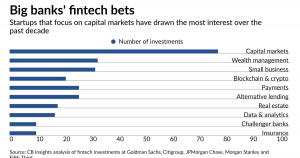Just as with traditional retail, any business operating in the world of digital retail likewise needs to know how to make and keep their customers happy if they wish to succeed. And, a digital retailer will likely face a different set of customer expectations than their offline cousins.
What customers need from the products they buy and the retailers that provide those products for sale, varies based on customer segments, characteristics of the products themselves, as well as expectations based on offerings promoted by competitors and promises made by the retailer. It’s essential that you focus on meeting these expectations and needs if you wish to succeed. That means external research to learn more about both prospective customers and your competitors, as well as ensuring you can keep any promises made (or implied) by elements of your messaging.
Getting everything right so you meet customer expectations and needs, involves a number of factors. which may match what offline customers want, but more likely involves a different strategy and implementation. Even if customer expectations are similar across online and offline retail stores, factors are likely relevant in a new or different way.
Let’s take a look at some of the factors your customers are looking for now.
 Photo by Tiger Lily from Pexels
Photo by Tiger Lily from Pexels
An easy to navigate website
One of the quickest ways to get customers to turn away from your business is to make the website difficult to use or otherwise cumbersome. In fact, you have as little as 15 seconds to demonstrate your website is just what visitors want before they abandon your site for another. On mobile, you have as little as 3 seconds to make a good first impression [source].
If visitors aren’t met with an attractive website, containing exciting graphics, easy navigation, intuitive search, and filter options so they find what they’re looking for without manually browsing through an endless stream of product choices, your potential customers aren’t going to hang around too long – they’ll simply leave in frustration and seek a better experience with a competitor who offers a more user-friendly website. So bear this in mind, and do whatever you can to make your website easy to use. That generally means simplifying it, offering clear navigation, and keeping the website as bare-bones as possible.
For a digital retailer, the homepage must be inviting with attractive graphics that reinforce the value of products from the website and fit between the products and the target market. A clean website with lots of white space is also more inviting than one cluttered with too much information or graphics.
Safe payment system
Although people are used to paying for purchases online these days, the issue of security is still lingering in the back of the mind for most, especially if the website is something they’re using for the first time or represent an unfamiliar brand. Ensure your payment portal does everything possible to alleviate fears by looking as professional as possible, featuring a secure website through https, and uses start-of-the-art encryption and security protocols. In fact, many credit card processors require these feature are incorporated into your website if you wish to take credit cards as payment — and how do you operate a digital retail store without accepting credit cards? Take cryptocurrency? Not many consumers could figure out the ins and outs of using such currencies.
Thus, making payments as secure as possible for your customers, which means that you need to have a strong secure payment system in place for your website isn’t negotiable. You should look into finding virtual merchant services that offer secure payment systems, as this is the easiest and most trustworthy way to ensure your website adheres to current payment protocols and is readily updated when those protocols advance. With that security, your customers are going to be much happier.

Provide plenty of product choice
Essentially, your customers expect to treat your website as an online warehouse. They expect to find many more products than they would in a traditional store, with most products available for immediate delivery. After all, the secret to Amazon’s success was built on two things they did exceptionally well: 1) its investment in warehouses located around the world so the product only has to move a short distance to reach its ultimate consumer and 2) building its product line progressively so that they were able to build out a wide variety within each product type, even in the beginning. Amazon became the go-to site where users knew they’d find a wide range of products, with tons of variety, and fast delivery.
If you’re a digital retailer and can’t provide these features to visitors, then it’s probably not going to go down too well and your sales will suffer. Make sure before you open up a shop that you have plenty of products to choose between, including many different options for each product. Offering great products at good prices available most of the time for speedy delivery is the key to digital retail success.
Great customer service
Some things are always going to be the same, no matter whether your retail is pure-play (100% online), totally offline, or some hybrid of both online and offline offerings, you need to offer the best customer service you can at all times. However, digital customer expectations related to customer service often feature much shorter windows for response than found in offline retail stores.
Only by offering superior customer service that addresses concerns quickly through a variety of contact options (such as chat, phone, email, and social media) can you ensure you can retain customers as well as attracting new customers through favorable reviews, recommendations, and other forms of influence between customers and prospects. Offer customer service by email and online chat at the very least, if you’re a digital retailer. If you can also offer a phone line service or host customer service hours in social media platforms, that’s going to be even better for everyone.
Digital & Social Articles on Business 2 Community
(68)






